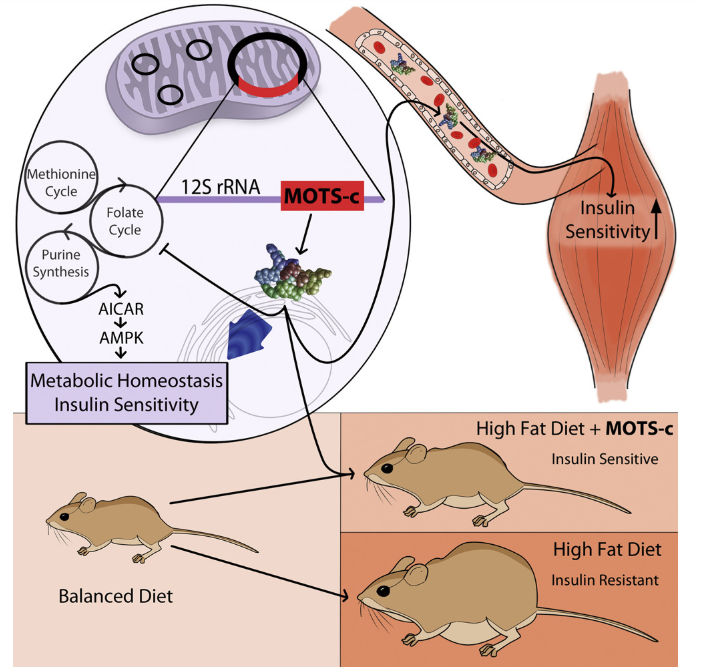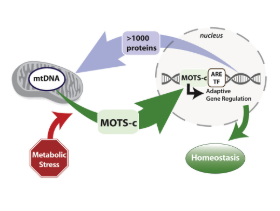0
Home
/
MOTS-C 10mg*10vials Per Kit
MOTS-C 10mg*10vials Per Kit
Quantity
ADD TO CART
Important Notices:
· This product is sold for scientific research purposes only.
· Product is provided as a lyophilized (freeze-dried) powder in a sealed, sterile vial.
· The quantity on the label refers to the total amount of product inside each vial.
· Additional lab supplies are required for conducting research such as bacteriostatic water for reconstitution, syringes & needles to draw from the vials, and alcohol prep pads for sanitizing vial stoppers prior to needle insertion.
· Vial appearance, label, seal and cap colors may vary from product photos.
· This product is sold for scientific research purposes only.
· Product is provided as a lyophilized (freeze-dried) powder in a sealed, sterile vial.
· The quantity on the label refers to the total amount of product inside each vial.
· Additional lab supplies are required for conducting research such as bacteriostatic water for reconstitution, syringes & needles to draw from the vials, and alcohol prep pads for sanitizing vial stoppers prior to needle insertion.
· Vial appearance, label, seal and cap colors may vary from product photos.
Detail
MOTS-c Overview
MOTS-c is a short peptide encoded in the mitochondrial genome and a member of the larger group of mitochondrial-derived peptides (MDPs). MDPs have recently been found to be bioactive hormones that play important roles in mitochondrial communication and energy regulation. Originally thought to be related to the mitochondria only, new research has revealed that many MDPs are active in the cell nucleus and that some even make their way into the blood stream to have systemic effects. MOTS-c is a newly identified MDP that has, to date, been found to play important roles in metabolism, weight regulation, exercise capacity, longevity, and even processes leading to disease states like osteoporosis. MOTS-c has been found in the nucleus of cells as well as in the general circulation, making it a bonafide natural hormone. The peptide has been targeted for intensive research in the last five years due to its therapeutic potential.
MOTS-c Structure

MOTS-C Structure, De BQUB17-JHolguera - Trabajo propio, CC BY-SA 4.0
Sequence: Met-Arg-Trp-Gln-Glu-Met-Gly-Tyr-Ile-Phe-Tyr-Pro-Arg-Lys-Leu-Arg
Molecular Formula: C101H152N28O22S2
Molecular Weight: 2174.64 g/mol
PubChem SID: 255386757
CAS Number: 1627580-64-6
Synonyms: Mitochondrial open reading frame of the 12S rRNA-c, MT-RNR1
MOTS-c Research
Muscle Metabolism
Research in mice indicates the MOTS-c can reverse age-dependent insulin resistance in muscles, thereby improving muscle uptake of glucose. It does this by improving skeletal muscle response to AMPK activation, which in turn increases the expression of glucose transporters. It is important to note that this activation is independent of the insulin pathway and thus offers an alternative means of boosting glucose uptake by muscles when insulin is ineffective or in insufficient quantity. The net result is improved muscle function, enhanced muscle growth, and decreased functional insulin resistance.
Fat Metabolism
Research in mice has shown that low levels of estrogen lead to increased fat mass and dysfunction of normal adipose tissue. This scenario increases the risk of developing insulin resistance and, subsequently, the risk of developing diabetes. Supplementing mice with MOTS-c, however, increases brown fat function and reduces the accumulation of adipose tissue. It also appears that the peptide prevents adipose dysfunction and the adipose inflammation that typically precedes insulin resistance.
It appears that at least part of the influence that MOTS-c has on fat metabolism is mediated through activation of the AMPK pathway. This well-defined pathway is turned on when cellular energy levels are low and it drives the uptake of both glucose and fatty acids by cells for metabolism. It is also the pathway that is activated in ketogenic diets, like the Atkin’s diet, which promote fat metabolism while protecting lean body mass. MOTS-c targets the methionine-folate cycle, increases AICAR levels, and activates AMPK.
New research suggests that MOTS-c can actually leave the mitochondria and make its way to the nucleus where the peptide can affect nuclear gene expression. Following metabolic stress, MOTS-c has been shown to regulate nuclear genes involved in glucose restriction and antioxidant responses.
MOTS-c has effects in both the mitochondria and the nucleus.
Evidence from mice indicates that MOTS-c, particularly in the setting of obesity, is an important regulator of sphingolipid, monoacylglycerol, and dicarboxylate metabolism. By down-regulating these pathways and increasing beta-oxidation, MOTS-c appears to prevent fat accumulation. Some of these effects are almost certainly mediated via MOTS-c action in the nucleus. Research on MOTS-c has led to a new hypothesis about fat deposition and insulin resistance that is gaining traction in the scientific community and may offer a new means of intervening in the pathophysiology of obesity and diabetes. It appears that dysregulation of fat metabolism in mitochondria may result in a lack of fat oxidation. This leads to higher levels of circulating fat and thus forces the body to boost insulin levels in an effort to clear lipids from the bloodstream. The consequence of this action is increased fat deposition and a homeostatic change in the body as it adapts to (and becomes resistant to) chronically higher levels of insulin.
 MOTS-c supplementation in rats prevents mitochondrial dysfunction and prevents the accumulation of fat even in the setting of a high-fat diet.
MOTS-c supplementation in rats prevents mitochondrial dysfunction and prevents the accumulation of fat even in the setting of a high-fat diet.
Insulin Sensitivity
Research measuring MOTS-c levels in insulin sensitive and insulin resistant individuals has shown that the protein is associated with insulin sensitivity only in lean individuals. In other words, MOTS-c appears to be important in the pathogenesis of insulin insensitivity, but not in the maintenance of the condition. Scientists speculate that the peptide maybe a useful means of monitoring pre-diabetic lean individuals and that changes in MOTS-c levels could act as an early warning sign of potential insulin insensitivity. Supplementation with MOTS-c in this setting could help to stave off insulin resistance and thus the development of diabetes. Research in mice thus far has been promising, but more work is needed to understand the full impact of MOTS-c on insulin regulation.
Osteoporosis
MOTS-c appears to play a role in the synthesis of type I collagen by osteoblasts in bone. Research in osteoblast cell lines shows that MOTS-c regulates the TGF-beta/SMAD pathway responsible for the health and survival of osteoblasts. By promoting osteoblast survival, MOTS-c helps to improve type I collagen synthesis and therefore the strength and integrity of bone.
Additional research in osteoporosis has revealed that MOTS-c promotes the differentiation of bone marrow stem cells via the same TGF-beta/SMAD pathway. In the study, this directly led to increased osteogenesis (formation of new bone). Thus, not only does MOTS-c protect osteoblasts and promote their survival, it promotes their development from stem cells as well.
Longevity
Research on MOTS-c has identified a specific change in the peptide that is associated with longevity in certain human populations, such as the Japanese. The change in the MOTS-c gene, in this case, leads to the substitution of a glutamate residue for the lysine that is normally found in position 14 of the protein. It is not clear how this change affects the functional aspects of the protein, but that it does is almost certain as glutamate has radically different properties than lysine and thus would change both the structure and the function of the MOTS-c gene. More research is required to understand how this change affects function, but it is found exclusively in people with Northeast Asian ancestry and is thought to play a role in the exceptional longevity seen in this population.
According to Dr. Changhan David Lee, a researcher at the School of Gerontology at USC Leonard Davis, mitchondrial biology holds the keep to extending both lifespan and healthspan in humans. The mitochondria, being the single most important metabolic organelle, is “strongly implicated in aging and age-related diseases.” Until now, dietary restriction offered the only reliable means of affecting mitochondrial function and thus longevity. Peptides like MOTS-c, however, may make it possible to directly impact mitochondrial function in a more profound way.
Heart Health
Research measuring MOTS-c levels in humans undergoing coronary angiography has revealed that patients with lower levels of MOTS-c in the blood have higher levels of endothelial cell dysfunction. Endothelial cells line the inside of blood vessels and are integral to the regulation of blood pressure, blood clotting, and plaque formation. Additional research in rats suggests that while MOTS-c does not directly affect blood vessel responsiveness, it does sensitize endothelial cells to the effects of other signaling molecules, like acetylcholine. Supplementing rats with MOTS-c has been shown to improve endothelial function and improve microvascular and epicardial blood vessel function.
MOTS-c is not alone among mitochondria-derived peptides (MDPs) in affecting heart health. Research suggests that at least three MDPs play roles in protecting cardiac cells against stress and inflammation. There is good reason to believe that MDP dysregulation is also an important factor in the development of cardiovascular disease. The peptides may even be important factors in reperfusion injury and, as pointed out above, in endothelial function.
MOTS-c exhibits minimal side effects, low oral and excellent subcutaneous bioavailability in mice. Per kg dosage in mice does not scale to humans. MOTS-c for sale at Peptide Sciences is limited to educational and scientific research only, not for human consumption. Only buy MOTS-c if you are a licensed researcher.
Customer Reviews




